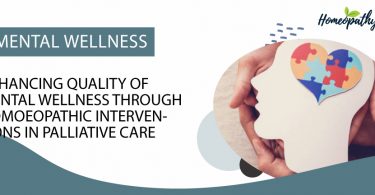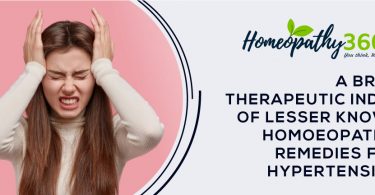In chronic disease, often several medicines are required to complete a cure. These should follow a correct sequence to have an optimal effect. Giving the second or the third indicated medicine first may result in temporary amelioration but will not start the process of cure. The following case exemplifies this rule. Homoeopathy (2002) 91, 40–42.
Initial presentation
April 1989, an 18-month-old boy presented, suffering from severe eczema and malabsorption said by the child’s paediatrician to be due to coeliac disease. The child was on a gluten-free diet.
History
During pregnancy his mother had had many physical and psychological problems. The umbilical cord was wrapped around the child’s neck at birth. His growth was significantly retarded. He gets cold very easily. The child had DPT and later BCG immunisation and subsequently developed eczema. There is a family history of tuberculosis.
Symptoms
Malabsorption. The child cannot tolerate gluten in any form. He spits bread from his mouth and always has undigested stools. The child was on a gluten-free diet but from time to time the parents gave him some bread to see if the reaction to gluten was continuing. The child always spat bread out. The obvious symptom is an aversion to bread. But potatoes or any food containing gluten also caused undigested stool and diarrhoea.
Dermatitis
Generalised eruptions except in the nappy area. The eruption is very itchy, and he scratches himself until he bleeds. Itchingoundressing (3+), getting warm in bed (2+). The discharge from the eruptions is sticky and honey-like.
Generals
He is very ‘clingy’ to his mother, always miserable, nothing seems to cheer him up, cries a lot. He desires bananas and potatoes (2+) and has an aversion to bread and apples. He feels better at the seaside, with the improvement of the skin. His hands and feet are always cold. He sleeps on his abdomen. Foggy, damp and cold air aggravates his condition. He grinds his teeth (3+).
Previous homoeopathic treatment
Natrum muriaticum 1 M. After this he slept better, his mood improved and he appeared happy for a while but then plateaued. Pulsatilla 1M caused improvement only for a week. Dulcamara LM6 and LM30, in repeated doses, helped only for a few days. Between Pulsatilla and Dulcamara, he also received one dose of Calcarea carbonica is a low potency, without result.
Analysis and prescription
Graphites was a possibility, because of the honey-like discharge from the skin. But for the skin eruptions of Graphites, the main localisation would be bends of joints and behind the ears. Children especially will show cracks behind their ears. Medorrhinum could be considered because of 4at the seaside and because the child sleeps on his abdomen. But for Medorrhinum the eruptions would be exactly in those places where he does not have eruptions, the nappy area. Tuberculinum was prescribed, basing the prescription on the following symptoms: grinding of teeth; family history of tuberculosis; ailments since tuberculosis immunisation; difficult and dissatisfied child, desire for potatoes and bananas. As the BCG was the last immunisation and seemed to precipitate eczema and the malabsorption syndrome, most probably tuberculum should have been given as the first prescription.


Prognosis
All the homoeopathic medicines prescribed in the past either had no effect or gave only temporary, partial and immediate amelioration. In such severe pathology, the correct medicine should give an initial aggravation. The problem in such cases, especially children, is that there may be severe aggravation after the correct medicine. Therefore, a single dose of Tuberculinum bovinum 30c was prescribed, expecting an aggravation. It would be unrealistic to expect that this case could be resolved by a single medicine. I expected to see another picture emerge.
First Follow-upF19 July 1989 (15 weeks following the initial prescription)
After Tuberculinum there was a severe aggravation of the skin lasting until now. It was obvious that the skin eruption had aggravated greatly; the child scratched throughout the consultation. Nevertheless, his behaviour, sleep, tendency to catch colds and grinding of teeth were better. He still had aversion to bread. The child still scratches until he bleeds, he is thirstless and desires cold food. Repeat allergy tests confirmed that the child was allergic to wheat. Such cases have ‘layers’ and the aim should be to perceive the topmost layer. Once this layer has been removed, the next layer will surface and indicate the next medicine more clearly. Symptomatology, now pointed clearly towards Pulsatilla (see Figure 1). Pulsatilla had already Figure 1 Repertorisation using RADAR software at the time of the initial consultation. (A) Symptoms used for repertorisation. This repertorisation and the Vithoulkas Expert System (B) gave Tuberculinum as the most indicated medicine. Note that Pulsatilla came second, indicating that it may be the next medicine. A ‘flat’ repertorisation (i.e. without symptom weighting) indicates Pulsatilla (C).
The sequence of remedies Homeopathy been given before the Tuberculinum with only temporary effect. Could we now trust that Pulsatilla would act? A single dose of Pulsatilla 30c was prescribed. Two days later, the attending physician called the mother to ask about the itching, that had bothered the child so much during the second interview. The mother said that the itching had almost totally subsided, after Pulsatilla.
Second Follow-upF26 March 1990 (1 year after the initial consultation)
The eruption disappeared soon after the Pulsatilla. There was no itching at all. The child could now eat bread.
Discussion
In severe chronic conditions, more than one medicine is needed to complete the cure, but these remedies have to be prescribed in the correct sequence. Prescribing different medicines in a haphazard way, even if the right ones are included will not result in a real cure. This rule almost invariably applies in severe chronic conditions. ‘The guiding principle in such cases is that the first remedy must represent those features/the totality that present(s) most vividly at the time. Where there is a clear causative factor that also relates to other features of the case, this will strongly influence the choice. After this treatment, the child started to develop acute illnesses which responded to Kali sulph, a medicine complementary to Pulsatilla.





